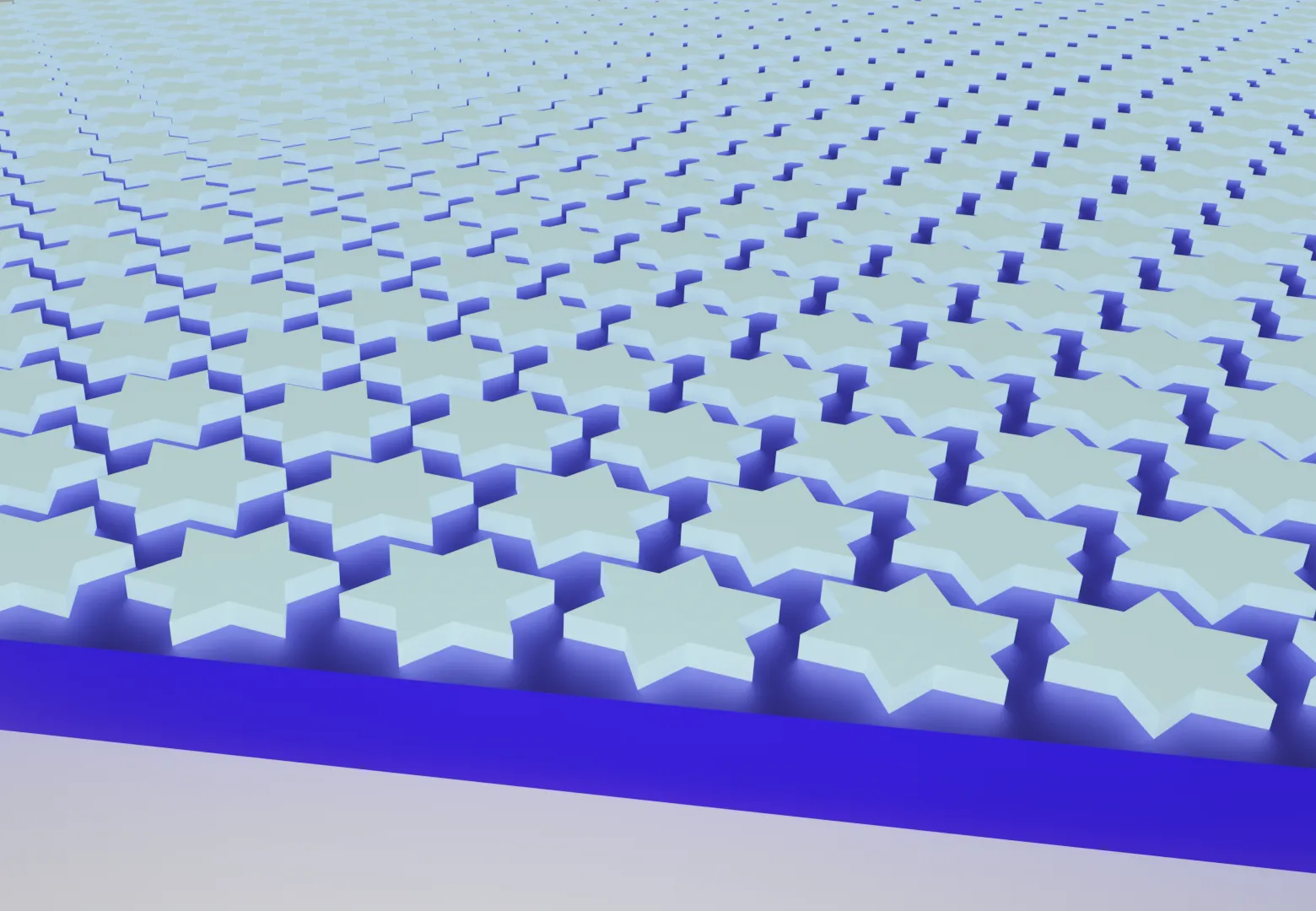
A simple toy of 2D Hubbard DMRG calculation
with nearest neighbor interactionas as well~
What is the problem?
Let’s imagine we have a 2D triangular lattice (so add the geometrical frustration flavor), and it is a electronic system with Coulomb repulsion, and nearest neighbor coupling. And we have site-by-site real space resolution of each lattice point. Now what if introducing random on-site energy/field to the system?
Intuitively we would imagine the electrons will trap at the site where it has strong enough on-site energy.
It can also be a question of how we define conductor and insulator, or metal-insulator transition (MIT). Convensionally the metal is defined in the transport bahaviors that static electric field introduces electron flow; while normal insulator where electrons are trapped heavily to the cores and cannot move. From the band theory then it’s about band gap—zero or small means metal, while large is insulator.
But, we have also seem Mott insulator where the electron-electron repulsion is preventing electron to hop from one site to another. The electron’s correlation largely affect elecron’s behavior now.
Additionally, Anderson localization give a suggestion of random/disorder play a powerful role in trap electrons into a local state. (Though it was initially suggested in a disordered system i.e. non-lattice, non-periodic system, it indeed happened in a periodic lattice system.)
Now we can also switch on interactions between the sites, and this might lead to many-body localization (MBL).
These are my naive view from a experimental observer. Welcome to discuss your thought.
Next I just brief summarize what the toy is using.
- Bored of square lattice -> get more frustration at triangular lattice ;-P
- Bored of simple Hubbard -> let’s add the flavor of nearest neighbor repulsion
realization, using julia, ITensors
I am just simply use julia programming language and ITensors.jl package to play.
what is julia
A programming language, yet again. BUT with much better features - especially for scientific computing community.
For people had some programming experience (e.g. python, Matlab, C++), check their grammar difference:
There are also good resources to jump in julia:
1. install julia
Download it from here: julialang.org
After installation, and open julia you will get a command-line tool, named REPL (read-eval-print loop).
You can simply use this as a calculator.
2. install Pluto
Pluto.jl is a julia notebook, like Jupyter notebook in python. It will open a webpage in your browser to use.
To install Pluto, we use julia’s build-in package manager. In REPL, press
] key to go package manager mode. (you will notice the julia> turn into pkg> with a julia version prefix like (@v1.10))(to exit the mode, press backspace or CTRL+C.)
then type add Pluto. Pluto will automatically get installed.
Once finished, type using Pluto, and then Pluto.run() to launch the notebook.
3. open the Pluto notebook file.
We first download the notebook file (from top right button of the code).
Then in the Pluto notebook starting page, open our code file there.
Once starting run the code, Pluto will then take care of necessary packages we will use in the calculation.
It will take several minute to download and install the packges.
and then later, all interactions goes into this notebook.
the code
The code is in the followings:
epilog
Have fun playing!
There are some side quests to explore:
-
How to include the next nearest neighbor and even higher interaction?
-
Can we introduce FM magnetism into the model and see frustration?
-
How to add a spatial gradient field to capture Stark MBL?
References:
- Abanin, D. A., Altman, E., Bloch, I. & Serbyn, M. Colloquium: Many-body localization, thermalization, and entanglement. Reviews of Modern Physics 91 (2019).
- Alet, F. & Laflorencie, N. Many-body localization: An introduction and selected topics. Comptes Rendus Physique 19, 498-525 (2018).
- Nandkishore, R. & Huse, D. A. Many-Body Localization and Thermalization in Quantum Statistical Mechanics. Annual Review of Condensed Matter Physics 6, 15-38 (2015).
- Altman, E. Many-body localization and quantum thermalization. Nature Physics 14, 979-983 (2018).
- Schulz, M., Hooley, C. A., Moessner, R. & Pollmann, F. Stark Many-Body Localization. Physical Review Letters 122, 040606 (2019).
- Morong, W. et al. Observation of Stark many-body localization without disorder. Nature 599, 393-398 (2021).